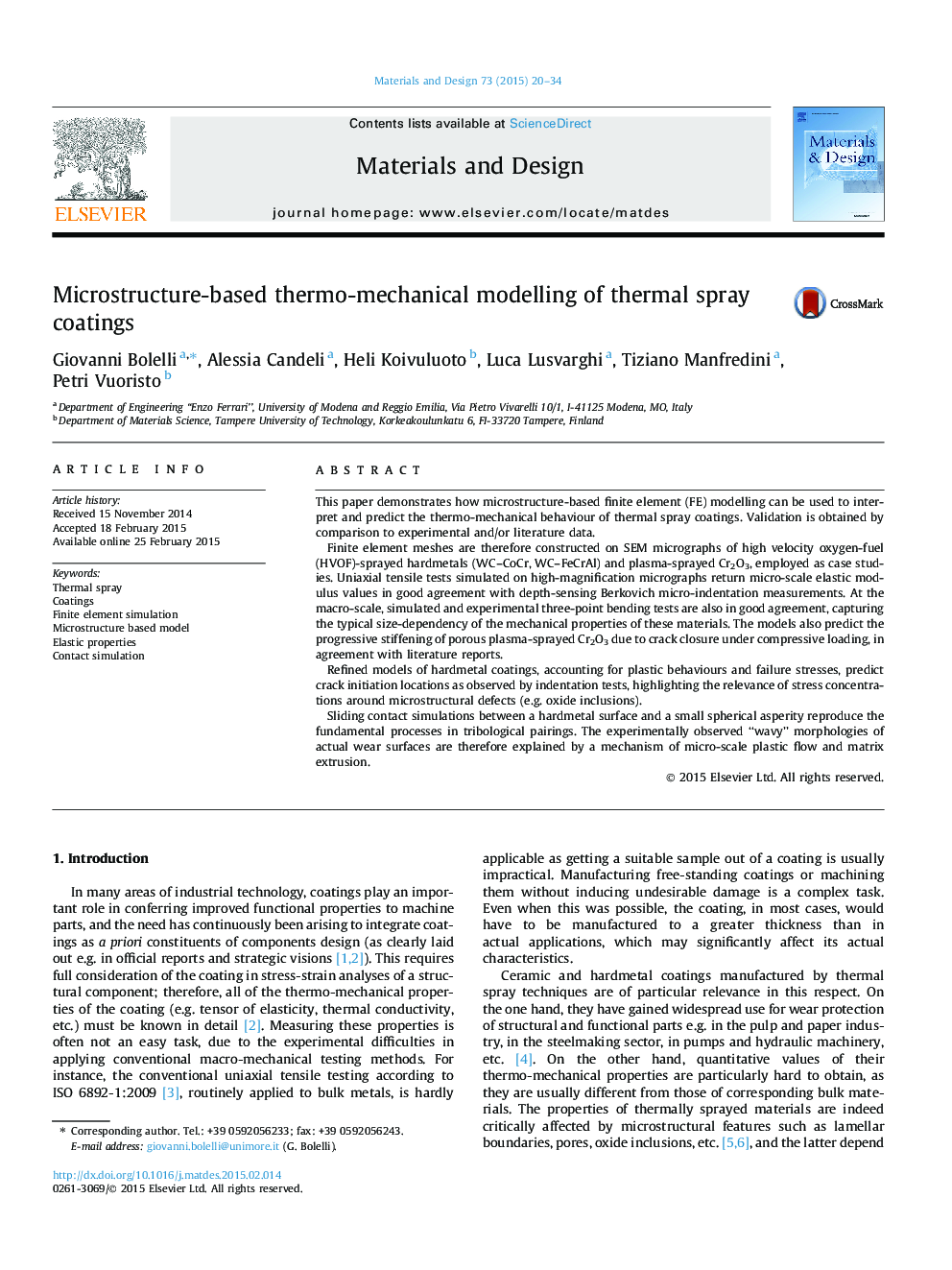| Article ID | Journal | Published Year | Pages | File Type |
|---|---|---|---|---|
| 828647 | Materials & Design (1980-2015) | 2015 | 15 Pages |
•Microstructure-based finite element models simulate the properties of thermal spray coatings.•Modelled values of orthotropic elastic moduli agree with experimental measurements.•Compressive stiffening of plasma sprayed ceramics occurs by progressive crack closure.•Cracks initiate where defects (e.g. oxide inclusions) cause stress concentration.•Single-asperity contact models reveal microscale stress propagation and plastic flow.
This paper demonstrates how microstructure-based finite element (FE) modelling can be used to interpret and predict the thermo-mechanical behaviour of thermal spray coatings. Validation is obtained by comparison to experimental and/or literature data.Finite element meshes are therefore constructed on SEM micrographs of high velocity oxygen-fuel (HVOF)-sprayed hardmetals (WC–CoCr, WC–FeCrAl) and plasma-sprayed Cr2O3, employed as case studies. Uniaxial tensile tests simulated on high-magnification micrographs return micro-scale elastic modulus values in good agreement with depth-sensing Berkovich micro-indentation measurements. At the macro-scale, simulated and experimental three-point bending tests are also in good agreement, capturing the typical size-dependency of the mechanical properties of these materials. The models also predict the progressive stiffening of porous plasma-sprayed Cr2O3 due to crack closure under compressive loading, in agreement with literature reports.Refined models of hardmetal coatings, accounting for plastic behaviours and failure stresses, predict crack
